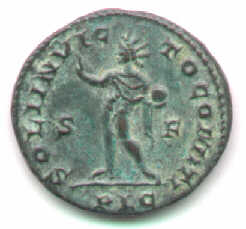|
|
|
In 325 A.D. the Roman Catholic Church was created by a pagan
emperor named Constantine. It was only superficially a Christian Church.
The First Nicean Council as assembled to work out the
details. While it was supposed to have been made up of Christian elders
from five major Christian centers (Rome, Athens, Alexandria, Jerusalem and
Antioch), it also included elders of all the major Pagan religions of
Rome. Bishops from the cults of Mithras, Tammuz, Oannes (Dagon), Ceres,
Janus, Bacchus, Apollo, Osiris, Jupiter, and Constantine's own religion:
Sol Invictus, were invited. It was Constantine's wish that all of the
Pagan religions, then at odds with each other, creating unneccesary
conflicts, be unified into one "Catholic" church. "Catholic"
means universal. The proceedings of that council were
conducted by Constantine with an iron hand, and one of the positions which
he insisted upon, and got, was to make Pistis a doctrine of the new
church. Gnosticism could not be tolerated, because it encouraged its
members to question authority. Pistis was thus politically expedient,
because it forbade questioning.
 This
is a very common copper coin of the Roman emperor Constantine the Great
who ruled 307 to 337 AD. This coin is 23 millimeters in diameter (almost
an inch, like a quarter). It says his name and three titles on the obverse
reading clockwise (the legend begins at 8:00):
This
is a very common copper coin of the Roman emperor Constantine the Great
who ruled 307 to 337 AD. This coin is 23 millimeters in diameter (almost
an inch, like a quarter). It says his name and three titles on the obverse
reading clockwise (the legend begins at 8:00):
(The spaces between words do not usually appear on Roman coins.) Roman names usually end in "VS" which is the Roman way of writing "us" (as in the names Marcus and Lucius). We call him "Constantine," they called him "Constantinvs".
In the legend, "P F" abbreviates "Pius",
which means "pious" or "dutiful", and "Felix,"
which means "happy". Finally, "AVG" abbreviates "Augustus",
which is the Roman title for "emperor". Again, the "V"
shape serves as the modern letter "u".
 The
reverse depicts a standing figure of Sol, the sun god, naked but for a
cloak, raising his right hand in blessing and holding a globe in his left
hand. Constantine invoked the support of the sun god before he converted
to Christianity. Can you make out the letters in the reverse legend? It is
The
reverse depicts a standing figure of Sol, the sun god, naked but for a
cloak, raising his right hand in blessing and holding a globe in his left
hand. Constantine invoked the support of the sun god before he converted
to Christianity. Can you make out the letters in the reverse legend? It is
around (beginning at 7:00), with PLG below, and S and F in the fields to the left and right of Sol. The legend translates to "Sol, invincible comrade (of Constantine)." The "PLG" mark is a mint mark of Lugdunum, now the modern Lyons in southern France. No one knows what the extra symbols S and F in the field mean, but they do distinguish this issue of coins from other similar issues.